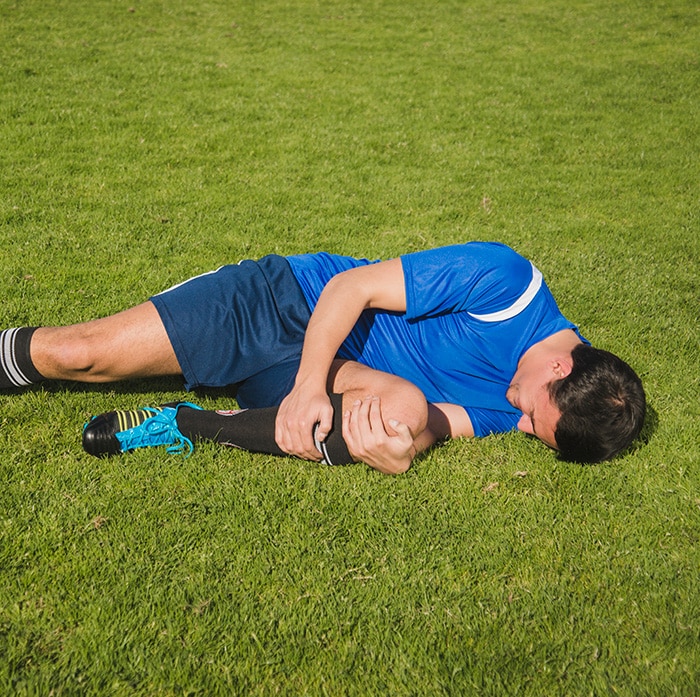Sports participation has physical, social, and psychological benefits. Unfortunately, lower extremity musculoskeletal injuries are common, especially in sports that involve high-impact manoeuvres such as landing and cutting.
Background & Objectives
Lower extremity musculoskeletal injuries are common in sports that involve high-impact manoeuvres, such as landing and cutting (e.g., soccer, basketball). While the severity of these injuries varies considerably, they can often disrupt or end an athlete’s ability/desire to participate. This is discouraging as these athletes may miss out on the benefits of sports participation. As a result, improving our ability to prevent injuries in athletes is imperative. A key step in injury prevention is developing a thorough understanding of the potential contributing factors.
The primary purpose of this study was to compare impact accelerations during un-planned and pre-planned lateral cutting. The goal of this was to provide insight into the role that the physical and cognitive demands of sports play in acute musculoskeletal injury risk.
Methods/Integrating Shimmer
15 males and 15 females, ages 18-30 years old, who had demonstrated experience competing in sports involving frequent landing and cutting participated in this study. Prior to the warm-up/testing, a Shimmer3 IMU sensor was secured to the anterior-medial tibia of the subject’s non-dominant limb, 8 cm above the medial malleolus. where it was set to sample at 500 Hz (range of ± 16 g).
Subjects then completed a warm-up which involved alternating between bodyweight squats and vertical jumps. Immediately following the warm-up, the subjects began the testing protocol, which required the execution of lateral cuts in two randomly ordered conditions: pre-planned and un-planned. For the pre-planned trials, subjects would stride forward from a distance of 1.5 m, land with their non-dominant limb, and immediately cut laterally in the opposite direction. The initial cut (non-dominant limb) and subsequent landing (dominant limb) needed to occur within 40 cm x 50 cm areas outlined on the floor to ensure consistency among trials, conditions, and subjects (Figure 1). For the un-planned condition, subjects were unaware of the manoeuvre to perform until after initiating a trial. As a result, they were unable to pre-plan their movement, which imposed temporal constraints on decision-making.
Results/Discussion
As Expected, Tibial impact accelerations were higher when subjects could not pre-plan their movement. There was also a small-medium increase in impact variability for the un-planned trials. In general, it appears that the subject’s ability to attenuate impact accelerations during cutting may have been compromised when they could not pre-plan their movement.
The un-planned testing condition was designed to begin to simulate the dynamic nature of the sports environment, as subjects were afforded limited time to re-direct their movement in response to the visual stimulus. It appeared that subjects were challenged by the temporal constraints on decision-making as they were unable to execute the cuts without an increase in impact accelerations.
Previous studies have observed higher peak vertical ground reaction forces during performance of similar un-planned single-leg cutting manoeuvres in athletes This is consistent with our findings as greater landing forces are likely to result in an increase in the accelerations experienced by the lower extremity. It appears that imposing temporal constraints on decision-making may place greater demands on the musculoskeletal system. Perhaps training designed to improve an athlete’s visuomotor processing speed could be a useful adjunct to current injury prevention programs. To learn more about this study, visit https://www.ncbi.nlm.nih.gov/pubmed/29809103.

